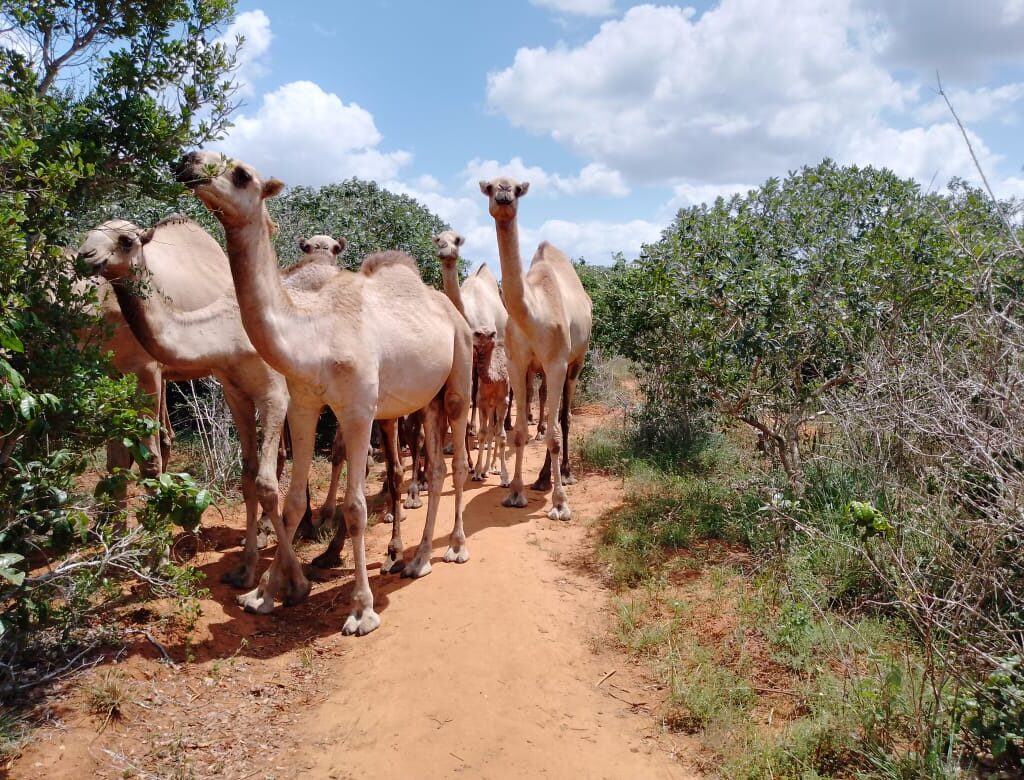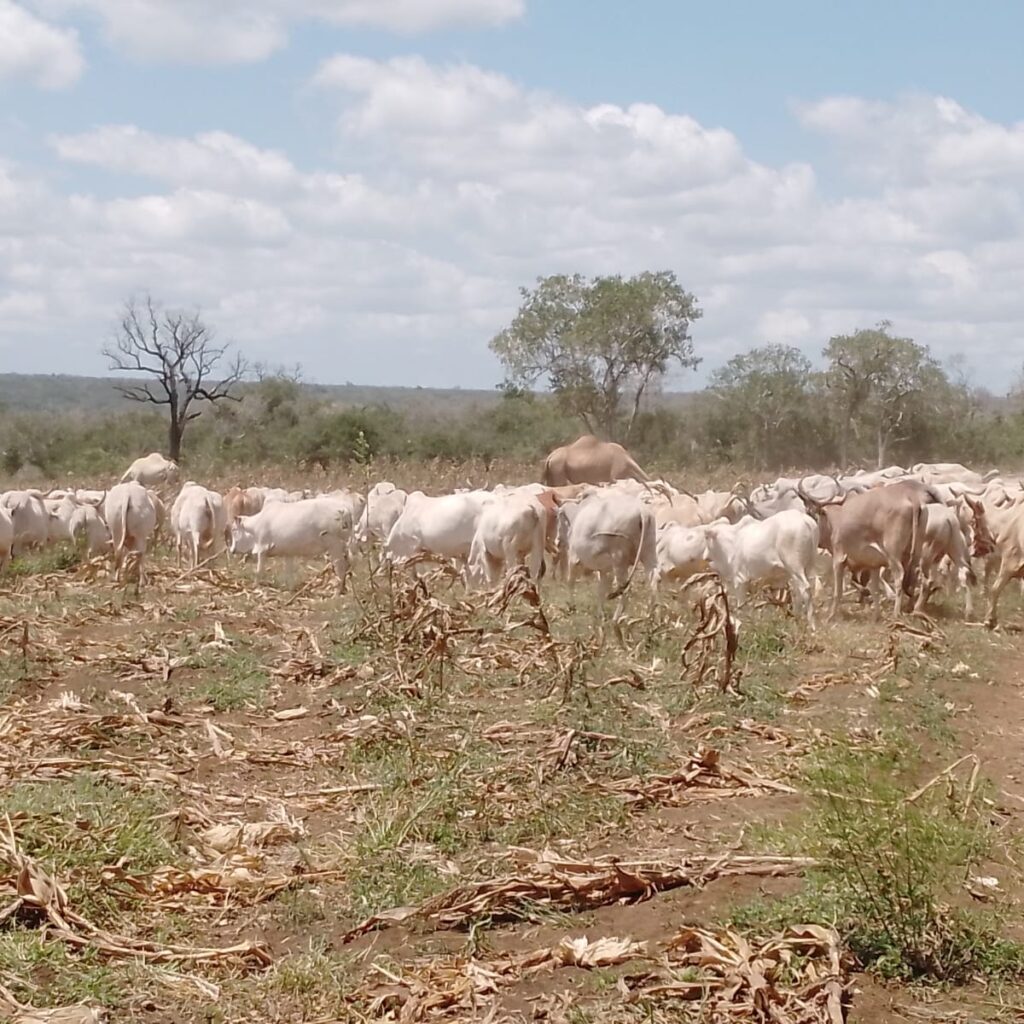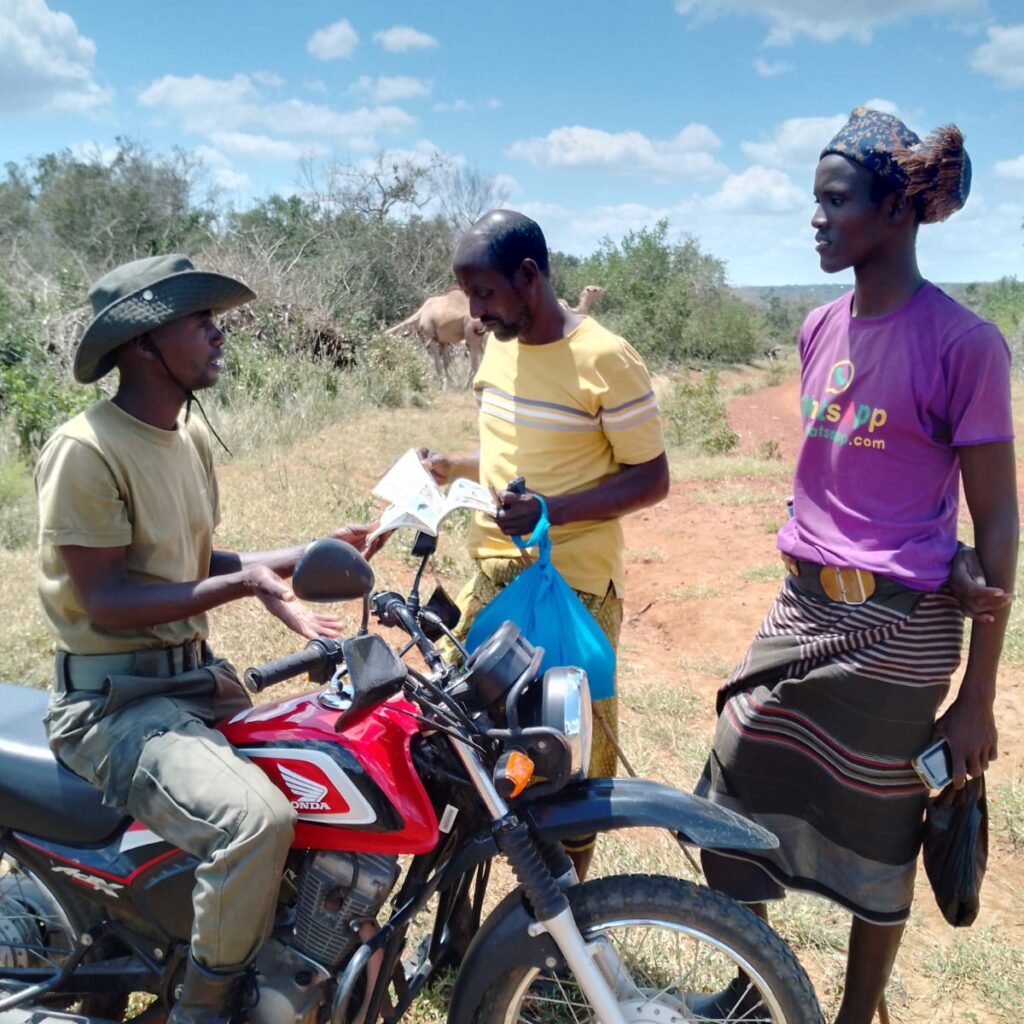As the rains subside in Dakatcha woodland, we are having a challenge of herders who have started flocking through the north part of the reserve to graze their camels, cows, goats, and sheep. The herders are from the neighboring communities.
Pastures around the reserve have depleted due to a huge number of livestock grazing. The reserve is among the remaining patches with some green pastures. Therefore, grazers huge number of camels feed on shoots of higher shrubs and trees causing stunted growth and thus disturbing the habitat regeneration process.

On the flip side, the goats and sheep feed on the undergrowth and sprouting shrubs and herbs suppressing them further. The cows eat the grass in the old farmlands, leaving the land exposed and at risk of erosion. This also damages newly planted trees. This situation is a major setback to our efforts of restoration and conservation.

Our Scouts are putting in relentless effort, even in the face of language barriers, to educate the herders about the reasons behind the grazing restrictions within the reserve. They’ve been taught to avoid using forceful methods and instead engage in conversations, explaining the concept of creation care.
Eric Kinoti ,our research assistant says,”There is gradual progress as the herders that come into the reserve change over time, so our scouts keep on educating them on the importance of protecting the nature reserve.”
